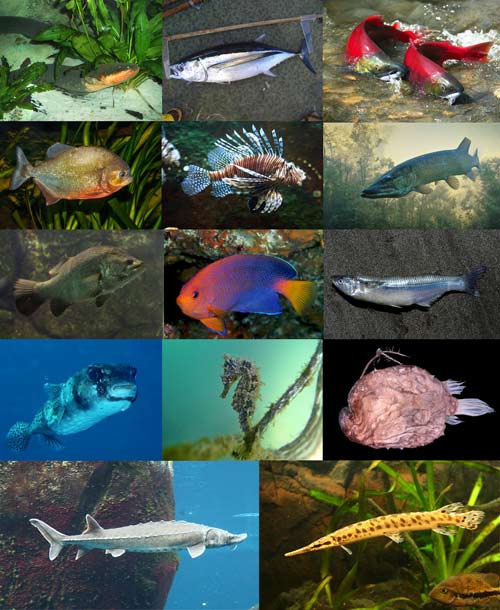Actinopterygii

Actinopterygii are the ray-finned fish, a subclass of the class Osteichthyes that have fins supported by bony rays which lack lobes in the bases of the paired fin.
Primitive actinpterygians are included in the Chondrostei and have asymmetrical tails, heavy scales, and an upper jawbone that is fused to the bones of the cheek. They were abundant during the Carboniferous period, some 345–200 million years ago. Holosteans replaced chondrosteans during the Triassic Period, about 220 million years ago, and show characteristics intermediate between those of chondrosteans and teleosts (the Teleostei). The latter group make up the vast majority of present-day fish populations in lakes, rivers, and oceans.
Teleosts have symmetrical tails, thin scales and an upper jawbone that is free from the cheek and adapted to a great variety of feeding habits. They number about 25,000 species, many of which are important human sources.


